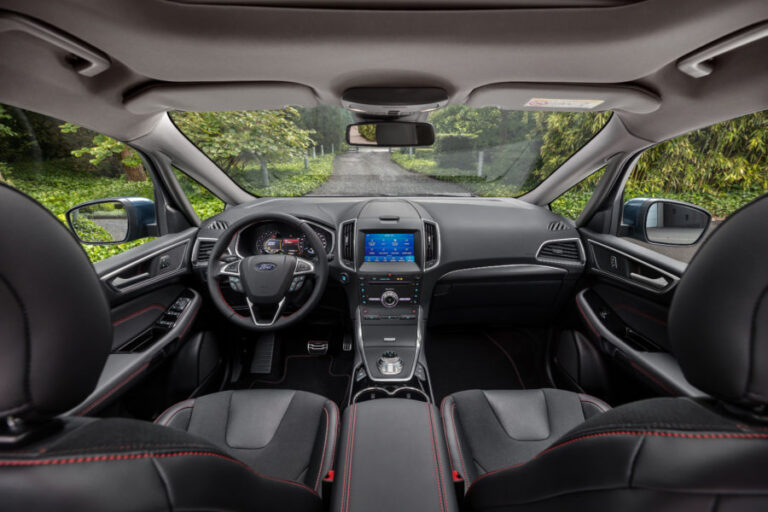Ford has unveiled a series of cabin enhancements for the latest S‑MAX and Galaxy models, starting with front passenger and driver seats capable of being adjusted in 18 different ways for maximum support.
The seats provide relief for back pain sufferers on the road, having achieved recognition from German spinal health organization Aktion Gesunder Rücken (AGR).
To obtain the AGR seal, the seat must be able to adapt to the person in their sitting position, rather than the person adapting their position to the seat. Adjustment includes height, length and inclination, in addition to back, neck and thigh support. The four-way lumbar adjustment is controlled electronically from a switch on the seat’s side.
The S-MAX and Galaxy seating configurations continue to offer flexibility and versatility with up to 32 seating and load-space combinations. The system enables each rear seat to be folded flat from a pushbutton control panel in the trunk space, while a Power Raise function is also available for Galaxy third-row seats.
FordPass Connect onboard modem technology is also offered on both models for the first time. FordPass Connect turns the vehicles into mobile wi-fi hotspots with connectivity for up to 10 devices. It also informs the driver of local hazardous situations in the road ahead before they become visible to the driver or vehicle sensors.
“The invaluable connectivity delivered by our FordPass Connect technology helps make life simpler and less stressful for S‑MAX and Galaxy customers whether they’re driving, working or relaxing,” said Roelant de Waard, vice president, marketing, sales and service, Ford Europe.
In addition to enabling wi-fi hotspot capabilities, FordPass Connect facilitates a range of features via the FordPass mobile app, including vehicle locator, vehicle status check, and remote door control.
Local Hazard Information notifications are delivered independent of sat-nav, based on up-to-the minute data provided by HERE Technologies – sourced from local authorities, emergency services, and driving data from other vehicles connected to the cloud. It offers notifications of hazards including road works; broken down vehicles; animals, pedestrians and objects in the carriageway; and even hazardous driving conditions.



